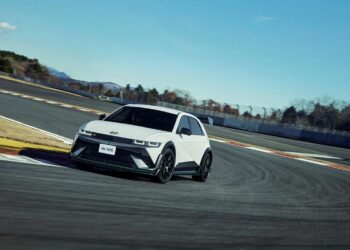A dive into the growth of the vibrant drift scene in Europe
Drifting in Europe has grown into a vibrant and diverse motorsport, characterized by a unique blend of regional styles, top-tier talent, and iconic events. While Europe may not be the birthplace of drifting, it has embraced the sport with enthusiasm, cultivating a scene that reflects the continent’s rich automotive heritage and cultural diversity. From the grassroots level to international competitions, the European drifting scene offers something for everyone.
The Growth of Drifting in Europe
Drifting began gaining popularity in Europe in the early 2000s, inspired by the success of the sport in Japan and the United States. European car enthusiasts, particularly those involved in the tuning and motorsport communities, were quick to adopt drifting. The sport appealed to drivers who were looking for a new challenge and a way to express their skills on the track.
The growth of drifting in Europe was initially driven by grassroots events. These events provided a platform for drivers to practice and compete in a relatively low-pressure environment. As the popularity of these events grew, so too did the level of competition, with more drivers investing in dedicated drift cars and honing their skills.
One of the early catalysts for drifting in Europe was the Drift Allstars series, which began in the UK and quickly expanded across the continent. Drift Allstars played a crucial role in establishing a competitive drifting scene in Europe, bringing together top talent from different countries and helping to raise the profile of the sport.
Regional Differences in Drifting Styles
One of the most fascinating aspects of the European drifting scene is the diversity of styles and approaches across different regions. Each country in Europe has developed its own unique take on drifting, influenced by local automotive culture, available vehicles, and driving conditions.
In the UK, for example, the drift scene has been heavily influenced by Japanese car culture, with many drivers favoring Japanese cars like the Nissan Silvia and Toyota Supra. The UK is known for its technical drift tracks and emphasis on precision driving. Events like Driftland in Scotland and Lydden Hill in England are popular venues that attract top talent from around the country.
In Eastern Europe, particularly in countries like Poland and Russia, the drift scene is known for its raw power and aggressive driving style. Drivers in these regions often favor high-horsepower builds, with V8 engines and turbocharged setups being common. The vast open spaces and harsh weather conditions in Eastern Europe have also influenced the development of the sport, with drivers often competing on challenging tracks that require both skill and bravery.
The Nordic countries have also made a significant contribution to the European drift scene, with Sweden and Finland producing some of the continent’s top drivers. The long winters and icy conditions in these countries have led to the development of a drifting style that emphasizes car control and adaptability. Events like Gatebil in Norway are famous for their high-energy atmosphere and attract drifters from across Europe.
Major Drifting Events in Europe
Europe is home to several major drifting events that have helped to shape the sport on the continent. One of the most prominent is the Drift Masters European Championship (DMEC), which has become the premier drifting series in Europe. DMEC attracts top drivers from across the continent and beyond, with events held in countries like Poland, Germany, and Ireland.
DMEC is known for its high level of competition, with drivers battling it out in front of large crowds on some of Europe’s most challenging tracks. The series has also helped to raise the profile of European drifting on the global stage, with many DMEC drivers going on to compete in international events like Formula Drift in the United States.
Another major event is Gatebil, held at the Rudskogen Motorsenter in Norway. Gatebil is not just a drifting competition but a massive motorsport festival that celebrates all aspects of car culture. The event features open track sessions, show-and-shine competitions, and, of course, drifting. Gatebil’s unique atmosphere and wide range of activities make it a must-attend event for car enthusiasts across Europe.
The Future of Drifting in Europe
The future of drifting in Europe looks bright, with the sport continuing to grow in popularity and attract new talent. The development of dedicated drifting facilities, the expansion of grassroots events, and the success of professional series like DMEC all point to a thriving and dynamic scene.
As the sport continues to evolve, Europe’s diverse drifting culture will likely play a key role in shaping the future of drifting worldwide. The combination of different styles, approaches, and influences from across the continent ensures that European drifting remains innovative and exciting.
Conclusion
The European drifting scene is a melting pot of styles, talent, and innovation. From the technical tracks of the UK to the high-horsepower builds of Eastern Europe, drifting in Europe is as diverse as the continent itself. With a strong grassroots foundation and a growing professional scene, Europe is poised to continue making a significant impact on the world of drifting for years to come.










